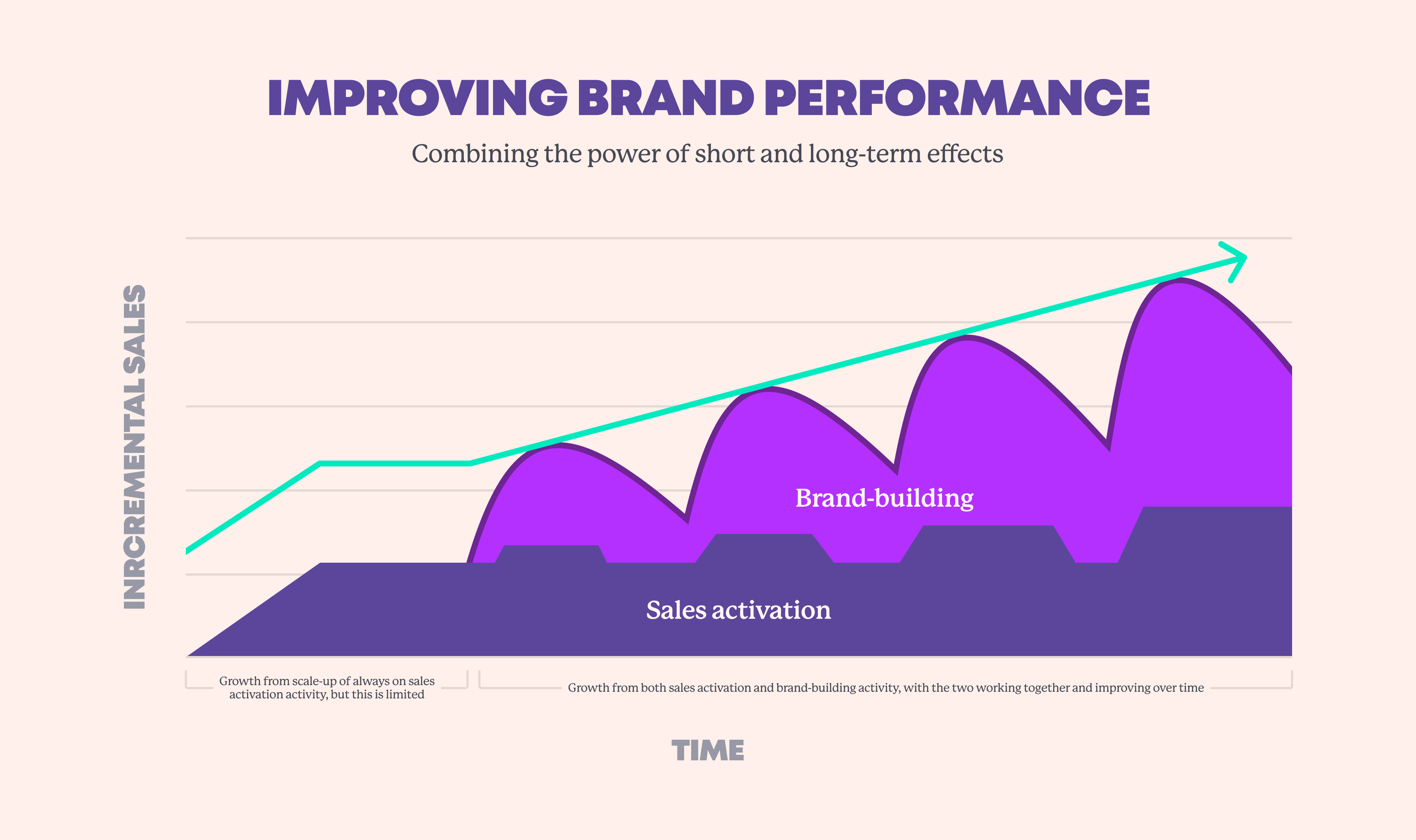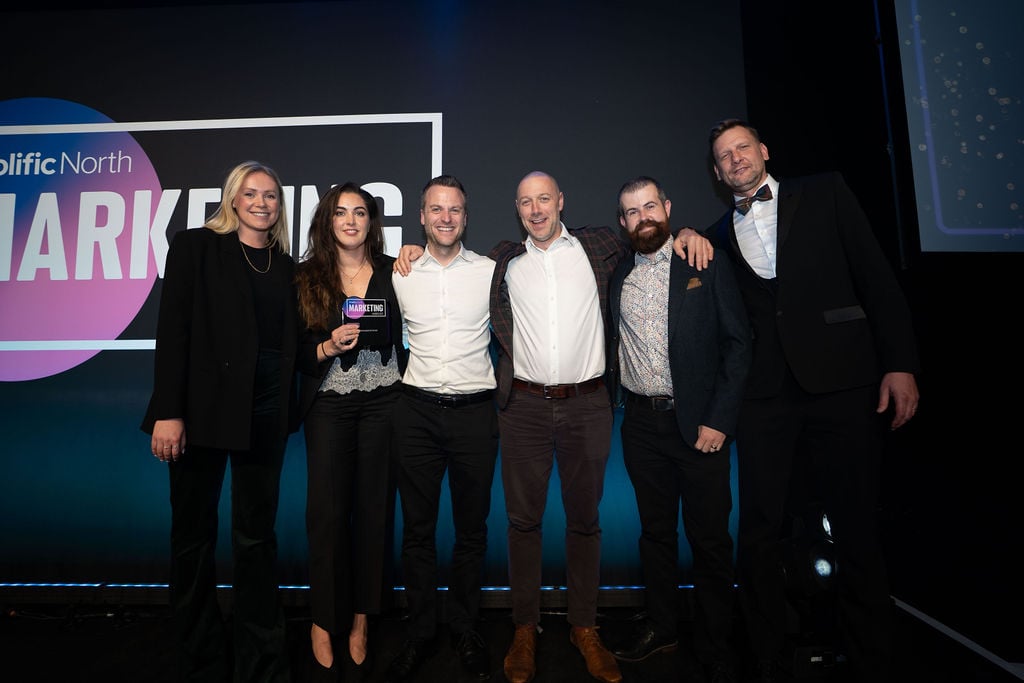In the dynamic world of marketing, a tension exists between the immediate need to drive sales and the long-term imperative to build a strong brand.
Historically, marketers have often relied on lagging indicators, such as sales or profit figures, and, at times, econometrics, which only reveal the impact of marketing activities after the fact and tend to respond slowly.
At the turn of the millennium, the rise of digital marketing introduced digital tracking and attribution modelling. For the first time, marketers could access real-time insights and measurable results, finally able to demonstrate direct impact on revenue. The appeal was clear: tangible, immediate results that appeared easy to measure and attribute. This led to a growing preference for short-term performance metrics. While digital and performance marketing have levelled the playing field, allowing smaller brands to compete with bigger players, they have also increased marketers’ reliance on tactics aimed at short-term returns, such as clicks, conversions, and ROI.
This was especially evident during the pandemic, when budgets leaned heavily into digital performance while brand investments were cut. (WARC – Rethinking the Brand, 2021). While performance marketing provides precision and accountability, strategies focused solely on short-term response risk becoming a “death sentence” unless balanced with long-term investment into building a strong brand.
As the importance of branding in marketing regains attention, a new conversation is emerging on how to balance performance with brand-building for lasting success. This article provides evidence supporting the brand-performance mix and explores emerging leading indicators that help measure the effects of brand building across digital and conventional metrics.
The brand vs performance dilemma
Here’s a breakdown of the difference between performance-led and brand-led marketing. Though distinct, the two are deeply intertwined.
Performance marketing focuses on direct, measurable responses and typically operates over days to quarters.
Brand marketing aims to build long-term awareness, trust, and emotional connection with consumers, positioning brands within their respective category. Brand-building channels favour mass reach and are less targeted, such as radio, linear TV, OOH, YouTube, digital PR, and display ads. Unlike performance marketing, which targets immediate actions like clicks and conversions, brand marketing seeks to build mental availability and long-term preference, paying off over months or years. Measuring its impact is also more complex and costly.
| OUTCOME | PERFORMANCE-FOCUSED | BRAND-FOCUSED |
| Short-term conversions and ROI | ✅ Strong | ⚠️ Slower |
| Long-term growth | ❌ Weak | ✅ Strong |
| Pricing power | ❌ Low | ✅ High |
| CAC & ROAS | ⚠️ Rising over time | ✅ Declines |
| Customer loyalty | ❌ Weak | ✅ Strong |
So, how do brands grow?
In essence, reach, relevance, and repetition by targeting broad audiences.
More reach → more awareness → more consideration → more customers → more market share → more growth.
This linear path might seem simplified, but it reflects a hard truth: most people aren’t buying your product right now (and most brands aren’t focusing on trying to reach these audiences).
This concept, known as the 95:5 rule (proposed by Professor John Dawes of the Ehrenberg-Bass Institute), suggests that only 5% of consumers are ready to buy at any moment. Performance marketing focuses solely on reaching this small in-market group. Though scalable, performance marketing eventually hits a ceiling, simply because you cannot convert demand that doesn’t exist.
Brand-building, on the other hand, targets the 95% of out-of-market buyers to ensure your brand comes to mind when they do enter the market. Over time, this drives growth in baseline sales, as illustrated below.

But where’s the evidence?
If you’re wondering whether brand-building delivers hard results, the answer is yes.
The findings below underscore the benefits of branding in marketing and highlight that it is more than just awareness; brand strength impacts sales, share, pricing power, and even resilience in downturns.
| STUDY / SOURCE | DESCRIPTION | KEY FINDINGS |
| IPA Databank + The Long & Short of It (Binet & Field) | Marketing effectiveness studies use decades of real-world campaign data. |
60% brand / 40% activation mix is optimal. Emotional campaigns drive stronger long-term effects. |
| Share of Search (Binet & Hankins) | Uses search data as a real-time proxy for brand strength and future market share. |
5% rise in SoS often leads to 2–3% market share growth in 6–12 months. |
| McKinsey & Company | Financial impact of strong branding across industries. | Strong brands outperform weaker ones by 73% in shareholder return over 10 years. |
| Kantar BrandZ / Brand Finance | Global brand valuation studies. | Strong brands grow faster, command price premiums, and drive profitability. |
Leading indicators that predict market growth
A leading indicator is a metric that signals future business performance before it fully materialises. These indicators help marketers assess whether current strategies will drive outcomes like sales, share, or equity.
A recent study, published in Marketing Science finds that traditional survey indicators, when combined with digital signals (which are easy to acquire), effectively predict revenue growth from brand-building activity.
Key findings of the articles are summarised below:
| METRIC TYPE | METRIC | OBSERVED EFFECT | TIME FRAME |
| Survey Metrics | Brand Awareness | 1% rise → 2–3% sales lift | Quarterly |
| Brand Consideration | Reduces forecast error by 10–15% | - | |
| Perceived Quality | +1 point → 2–3% sales uplift | Subsequent quarters | |
| Digital Metrics | Share of Search | 5% YoY rise → 2–3% market share growth | 6–12 months |
| Social Sentiment | 10% increase → 4–6% revenue boost | Within 3 months | |
| Direct Website Traffic | 5% rise → 3–4% sales increase | Quarterly | |
| Branded Search Volume | 1% rise → 0.5–1% online sales lift | Next month | |
| Forecasting | Integrated Models | Reduces error by 10–20% vs sales-only | Various |
These early signals help marketers adapt campaigns, defend brand budgets, and make smarter long-term decisions.
If you’re a smaller brand, here’s where to start
For smaller brands, the idea of balancing brand building with performance marketing can feel daunting, especially with limited budgets and pressure to demonstrate quick results. However, neglecting brand investment risks stagnating growth and rising customer acquisition costs over time.
Here’s how to get started:
-
Start small with brand investment
You don’t need a national TV campaign to build awareness. Use digital channels such as YouTube, influencers, programmatic display, and branded content to build awareness and increase digital visibility. Over the long term, these complement performance efforts and drive awareness while still maintaining cost control. -
Build distinctive brand assets
Consistency beats creativity. Develop and repeat distinctive brand assets (e.g., colours, fonts, taglines, jingles) to increase recognition. These assets build mental availability and make your performance ads work harder. -
Use a 60/40 budget split as a guideline, not a rule
The 60% brand / 40% performance ratio from Binet and Field is an average benchmark. Smaller or newer brands may benefit from a 70/30 split, favouring performance at first, but brand investment should grow as the business scales. -
Track leading indicators of brand health
Invest in low-cost tools or platforms that track branded search volume, direct traffic, social sentiment, and Share of Search. These are strong proxies for brand awareness and can help justify future brand spend. -
Think long-term, even when acting short-term
Align performance messaging with brand values and long-term positioning. Even your short-term ads should reinforce your brand story. This consistency ensures that every pound spent builds the brand, even when chasing sales.
Final thought - brand and performance aren’t siloed
They’re two parts of the same growth engine. One builds demand, the other captures it.
Neglecting either means leaving results on the table. But used together, they deliver stronger ROI, lower CAC, and a brand that stands the test of time.
Whether you're a challenger brand navigating early growth or an established business looking to rebalance your brand-performance mix, we can help you develop a marketing strategy that delivers both short-term results and long-term value. Get in touch with our strategy team to start a conversation.
References
Binet, L. and Field, P. The Long and Short of It (2013). IPA Databank. Available at: https://ipa.co.uk/knowledge/databank/ (Accessed: 7 June 2025).
Binet, L. and Hankins, J. (2021) Share of Search. Available at: https://ipa.co.uk/news/share-of-search (Accessed: 7 June 2025).
Ehrenberg-Bass Institute (No Date) How Brands Grow (2012) Empirical research on brand growth. Available at: https://marketingscience.info/how-brands-grow/ (Accessed: 7 June 2025).
Google & YouGov Brand Metrics (No Date) Ad tracking and consumer survey research. Available at: https://www.thinkwithgoogle.com/intl/en-gb/marketing-resources/brand-building/ (Accessed: 7 June 2025).
Hanssens, D., et al. (2014) 'The long-term and short-term financial returns of quality', Journal of Marketing, 78(4), pp. 101-118.
Kantar BrandZ / Brand Finance (No Date) Global brand valuation studies. Available at: https://www.kantar.com/brands/brandz and https://brandfinance.com/ (Accessed: 7 June 2025).
McKinsey & Company (No Date) Financial impact of strong branding across industries. Available at: https://www.mckinsey.com/ (Accessed: 7 June 2025).
Semrush & Other Analytics (No Date) Links between online sentiment/search and revenue. Available at: https://www.semrush.com/ (Accessed: 7 June 2025).
WARC (2021) Rethinking the Brand. Available at: https://www.warc.com/content/article/warc-exclusive-rethinking-the-brand/145453 (Accessed: 7 June 2025).

Ready. Steady. Grow!
We've helped some of the world's biggest brands transform and grow their businesses. And yours could be next.
So if you've got a business challenge to solve or a brief to answer, we'd love to hear from you. Simply complete this form and one of our experts will be in touch!




